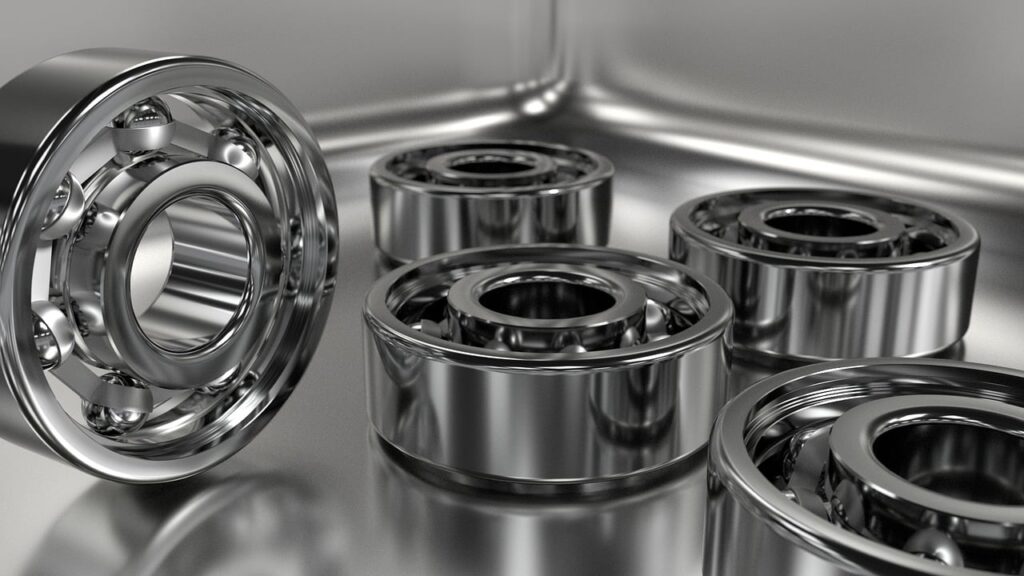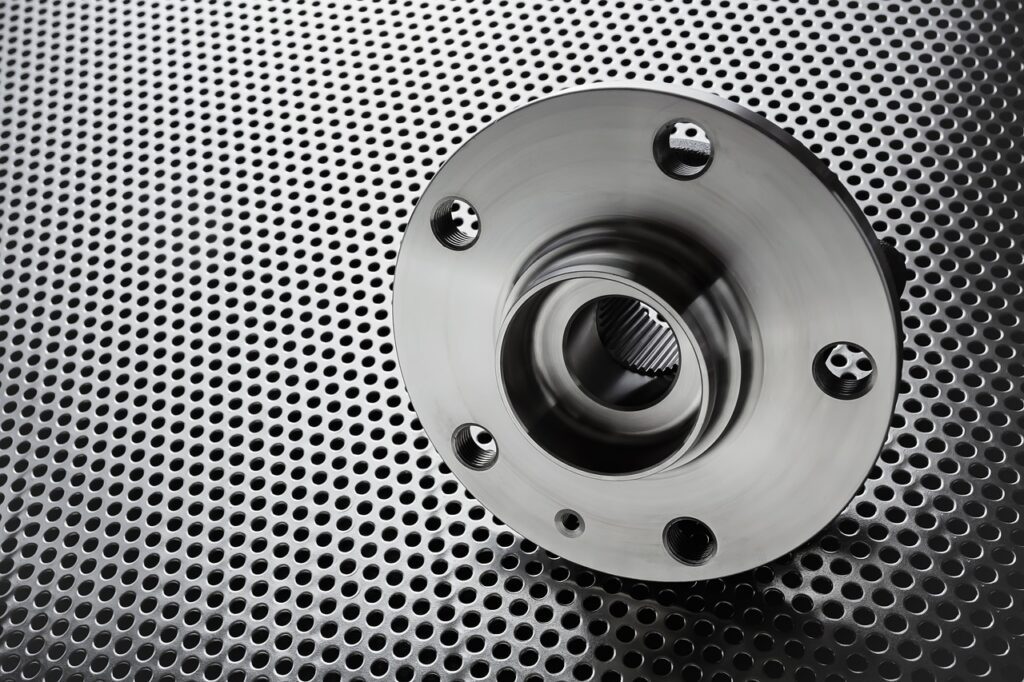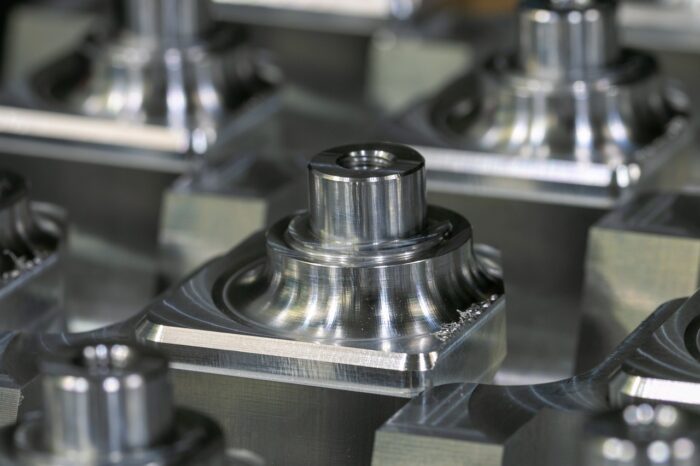CNC machining is one of the most popular methods for manufacturing parts and products across numerous industries. But beyond just cutting and shaping, achieving the desired surface finish is crucial to many projects. Let’s dive into how specific finishes, such as mirror and matte, can be achieved using CNC machines.
Why Surface Finish Matters
Before we delve into the techniques, it’s vital to understand the importance of surface finishes. A well-executed finish can:
- Improve the aesthetic appeal of a part
- Enhance corrosion resistance
- Reduce friction between components
- Extend the lifespan of parts by preventing wear
Achieving a Mirror Finish
The mirror finish, also known as a polished finish, is characterized by its high-gloss, reflective surface. Achieving this finish with CNC machining involves several steps:
- Tool Selection: Use a fine-grit ball end mill. The smaller the tool radius, the finer the finish will be.
- Machining Strategy: Opt for a high-speed machining strategy, ensuring that feed rates are consistent.
- Tool Path: Opt for a radial or spiral tool path to reduce visible tool marks.
- Coolants: Use generous amounts of coolant to prevent heat buildup, which can affect the surface finish.
- Post-Machining Polishing: Often, additional polishing processes, using polishing compounds and buffers, are needed to achieve a true mirror finish.
Achieving a Matte Finish
Matte finishes have a non-reflective or low-gloss surface, providing a smooth and subdued appearance. Here’s how to achieve it with CNC:
- Tool Selection: A regular flat end mill or face mill can be used. A rougher finish tool can also be used to enhance the matte appearance.
- Machining Strategy: Unlike mirror finishes, high-speed machining isn’t crucial. Regular feed rates can be used.
- Tool Path: A straightforward, linear tool path works best for matte finishes. Overlapping passes can help in ensuring uniformity.
- Blasting: Post-machining, sandblasting or bead blasting can be used to give an even matte finish across the surface.
- Coolants: Regular coolants can be used. The primary goal is to prevent tool wear and ensure chip removal.

Factors Influencing Surface Finish
Several factors can influence the type of finish achieved:
- Material: Some materials polish better than others. For instance, aluminum and stainless steel can be polished to a high shine, while some plastics might achieve a semi-gloss at best.
- Machine Rigidity: A rigid machine can handle higher feed rates without chatter, ensuring a smoother finish.
- Tool Condition: Dull tools can mar the surface, leading to uneven finishes.
- Cutting Parameters: Depth of cut, spindle speed, and feed rate can all influence the final surface.
CNC Surface Finishes: The Nuances of Mirror and Matte
When you think of CNC machining, the first thing that might come to mind is the precision and accuracy with which raw materials are transformed into intricate parts. But the realm of CNC goes beyond mere shaping; it extends into the world of finishing, where the final appearance and texture of a part are determined. Achieving the perfect surface finish is not just a matter of aesthetics; it has profound implications for the functionality and longevity of the finished piece.
The Journey to a Flawless Mirror Finish
A mirror finish, as the name suggests, is reminiscent of a glass mirror’s clear and reflective surface. This type of finish is often sought after for parts that need a high aesthetic appeal or specific functional properties like minimal friction. Achieving this requires a series of meticulously planned steps, all executed with precision. One of the primary tools used for this purpose is a fine-grit ball end mill. This tool, characterized by its small radius, is key to obtaining a fine finish. While a smaller tool radius translates to a finer finish, it also means that the machinist must take multiple passes, ensuring consistency and uniformity.
Tool choice is just the tip of the iceberg. The strategy you employ while machining plays a pivotal role. A high-speed machining strategy is preferred, ensuring that feed rates remain consistent, which in turn guarantees an even finish. Simultaneously, the tool path chosen can make a significant difference. A radial or spiral tool path, for instance, can significantly reduce visible tool marks, which are often the bane of anyone seeking a flawless mirror finish.
But even with the perfect tool and strategy, heat remains an ever-looming challenge. Excessive heat can introduce deformities and inconsistencies on the surface. Hence, the liberal use of coolant becomes paramount. Not only does it prevent excessive heat buildup, but it also ensures smooth tool movement, preventing any jerks or stops that could mar the surface. And yet, achieving a true mirror finish often demands a post-machining touch. This involves the use of polishing compounds and buffers that further smoothen the surface, enhancing its reflective qualities.
Mastering the Subtle Art of the Matte Finish
In contrast to the glamorous shine of the mirror finish stands the understated elegance of the matte finish. A matte finish is characterized by its smooth, non-reflective surface. Unlike the mirror finish, which seems to shout for attention, the matte finish whispers sophistication. Achieving this texture requires a different approach. Standard tools like flat end mills or face mills suffice. In fact, sometimes, a rougher finish tool might be chosen deliberately to emphasize the matte texture.
The machining strategy for a matte finish is relatively straightforward. Extreme speeds aren’t necessary. Instead, the focus is on maintaining regular feed rates, ensuring an even finish. The tool path, unlike the radial or spiral paths used for mirror finishes, is linear. Overlapping passes might be required to ensure a uniform texture. Once the machining is done, an additional step that can elevate the matte finish to perfection is blasting. Techniques such as sandblasting or bead blasting introduce a fine, even texture to the surface, enhancing its matte quality. Throughout the process, the use of coolants remains crucial – their role being to prevent excessive tool wear and aid in efficient chip removal.
Beyond Aesthetics: The Functional Implications of Surface Finishes
The discussion about surface finishes often revolves around the aesthetic realm, emphasizing the appeal of a shiny or subdued look. However, there’s much more to it. Surface finishes often have direct implications on a component’s functionality, lifespan, and its interaction with other parts and the environment.

Protective Qualities of Finishes
A fine mirror finish isn’t just about achieving a high-gloss appearance. Such finishes often act as a protective layer against environmental factors. When a surface is polished to such a degree, it minimizes the crevices and microscopic indentations where contaminants or corrosive elements could lodge, effectively reducing the chances of corrosion or degradation, especially in metals.
Friction and Surface Interaction
The nature of a surface finish can influence the friction coefficient of the material. A polished, mirror-like finish can reduce friction, making it ideal for parts that need to glide or slide against each other. Conversely, a matte finish, with its slightly rougher texture, can increase grip, making it suitable for components where slip-resistance might be beneficial.
Heat and Light Reflection
Mirror finishes, with their highly reflective surfaces, can effectively reflect light and heat. This quality makes them invaluable in industries where controlled reflection or deflection of light and heat is crucial – think solar panels or certain optical tools.
Enhancing Adhesion
In instances where a component will be painted or coated, a matte finish can offer better adhesion compared to a smooth, polished surface. The micro-roughness of a matte finish provides more surface area for paints or coatings to adhere to, ensuring a long-lasting bond.
Challenges and Solutions in Achieving Perfect Finishes
Achieving the desired finish is not without its challenges. Every material responds differently to machining processes, and what works for one might not work for another.
- Material Specificity:
Aluminum, for instance, can be polished to a high sheen relatively easily, while harder metals like titanium or certain alloys might demand more effort and different tools. Similarly, plastics and composites have their own unique requirements. - Machine Calibration:
Ensuring that the CNC machine is calibrated correctly is paramount. Any misalignment, however minute, can affect the final surface finish. Regular maintenance checks, cleanings, and calibrations are a must. - Tool Wear and Tear:
A tool that’s even slightly worn out can introduce imperfections on the surface. Regularly checking tools for wear and replacing them as needed ensures consistency in finishes.
Final Thoughts
The world of CNC machining is an intricate dance of precision, knowledge, and adaptability. While the shape and dimensions of a part are undeniably crucial, the surface finish is what often dictates its real-world functionality and longevity. Whether you’re aiming for the reflective brilliance of a mirror or the subdued elegance of matte, understanding the deeper implications of these finishes and mastering the techniques to achieve them can make all the difference. In the end, it’s about creating parts and components that don’t just fit but excel in their intended purpose.
